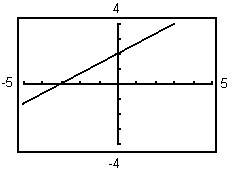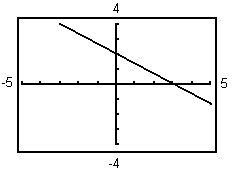Determine the x values that cause the function to be (a) zero, (b) undefined, (c) positive, and (d) negative.f(x) = 
A. (a)  , (b) (-?, -8), (c)
, (b) (-?, -8), (c)  ? (6, ?), (d)
? (6, ?), (d) 
B. (a) {-8}, (b)  ? (-?, -8) , (c)
? (-?, -8) , (c)  , (d)
, (d)  ? (6, ?)
? (6, ?)
C. (a)  , (b) (-?, -8), (c)
, (b) (-?, -8), (c)  , (d)
, (d)  ? (6, ?)
? (6, ?)
D. (a) {-8}, (b)  ? (-?, -8) , (c)
? (-?, -8) , (c)  ? (6, ?), (d)
? (6, ?), (d) 
Answer: D
You might also like to view...
Find the common difference, d, for the arithmetic sequence.8, 12, 16, 20, . . .
A. 20 B. 4 C. 8 D. 12
Solve the equation. Use the change of base formula to approximate an exact answer to the nearest hundredth when appropriate.e-x = 731
A. x = -log 731 B. x = ln -731 C. x = ln 731 D. x = -ln 731
Graph the equation using the indicated viewing window.2x + 3y = 6;X min = -10X max = 10X scl = 2Y min = -8Y max = 8Y scl = 2
A. 
B. 
C. 
D. 
Use the change of base rule to find the logarithm to four decimal places.log2 36.87
A. 5.2044 B. 0.1921 C. 1.5667 D. 18.4350